Best Breakfast Dishes of Kerala
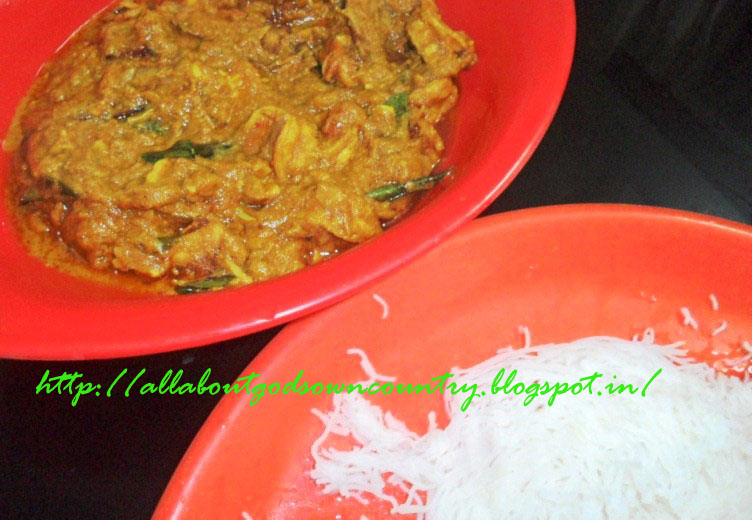
Noolappam and Mutton Curry
Dosa and Idli are the most common breakfast dishes of Kerala
Dosa or Idli served with chutney or sambar is the most common breakfast in Kerala homes. Both of them are made using same batter (a mixture of rice and black gram). Known to be a Tamil Nadu dish, dosa is extremely popular in North and foreign countries too. Ghee roast (known as Ney Roast), Oothappam and Masala Dosa are the common variations of dosa, in addition to plain dosa. Dosa is extremely tasteful if made in an iron tawa, but it needs oil or ghee. Dosa can also be made oil-free in a non-stick pan. Read 7 variants of Dosa recipes here.

Paneer Dosa – A variant of dosa with North Indian flavour
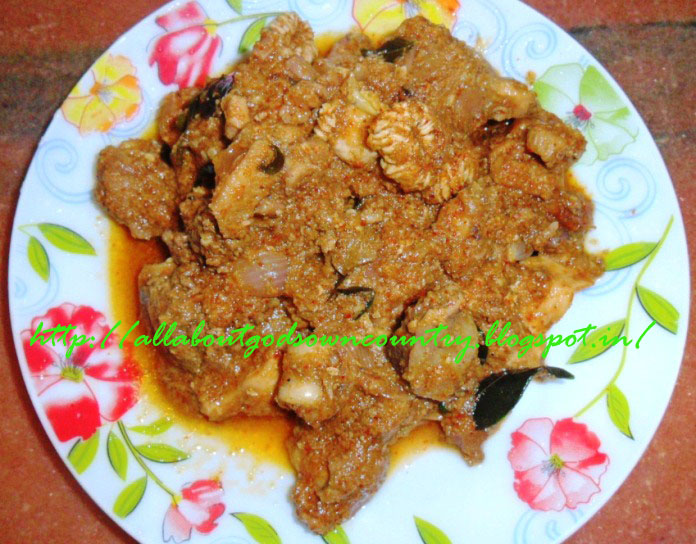
Chicken Curry – A common non-veg side dish for Kerala breakfast
When potato masala is stuffed into dosa, it becomes masala dosa. Othappam is made by seasoning dosa with onions and green chillies, and very often pepper and carrot. More than 100 varieties of dosa can be made and available at different restaurants of Kerala as well, and some varieties use paneer, minced meat, scrambled eggs and a mix of two or three of these too.
Idli is most commonly associated with chutney, chutney powder or sambar, and Idli made of rice-urud daal batter is common in Kerala. Batter used for Idli is thicker than dosa batter. Read to know how to make soft idlis, and tips to make them better. Chutney may be curry type or simple red chutney grinded in a stone or mixer without adding water. Curry Chutney may be made using red chillies or green chillies, and Pudina chutney is another variety of chutney used with idli or dosa. Tomato chutney and onion chutney are other variants.
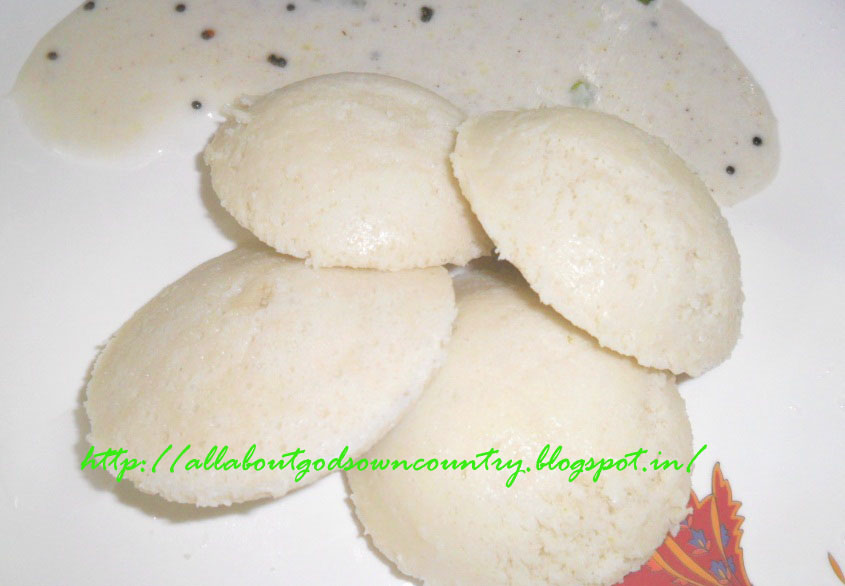
Idli and Chutney
Pathiri – A trademark Muslim dish
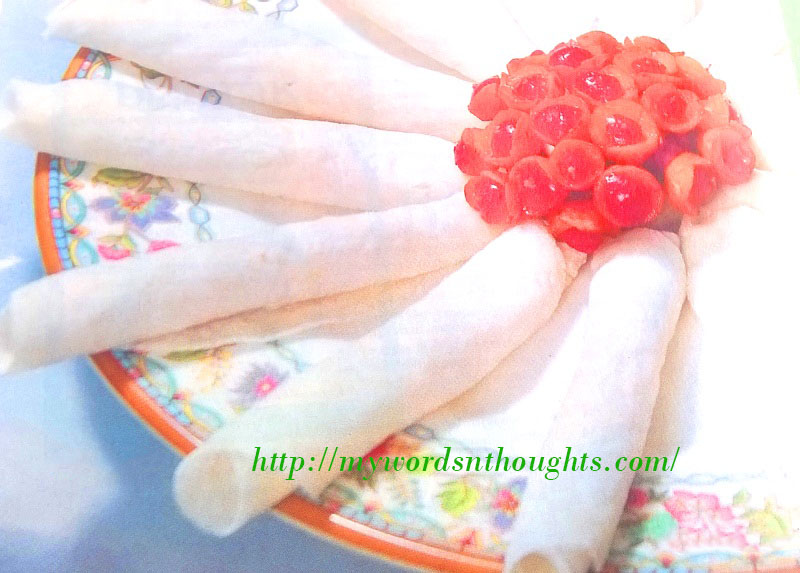
Made using rice flour, Pathiri is a trademark dish of Muslims of Kerala. But it is also made by people belonging to other religious beliefs, and easy available in restaurants and bakeries of Kerala. It is very thin in nature and round in shape, and taken along with non-vegetarian dishes like beef, mutton and chicken.
Appam/Kallappam – A typical Kerala dish

Normal Appam
It’s a fermented dish, and Palm wine (Kallu) is added to batter and place it overnight to prepare Kallappam. Soaked raw rice is grinded along with scrapped coconut and cooked rice to prepare batter. Yeast can also be used for fermentation and is commonly used to prepare appam. See a few more tips to know how to prepare soft appams. Appam is normally made in an appam maker (appa chatti), and nowadays non-stick pan is common in use. Batter is poured to the bowl like appam maker, and spread to a perfect circle, and closed with a lid. It is steam cooked and never flipped. If the batter is well-fermented numerous holes will be formed, and appam is perfect.
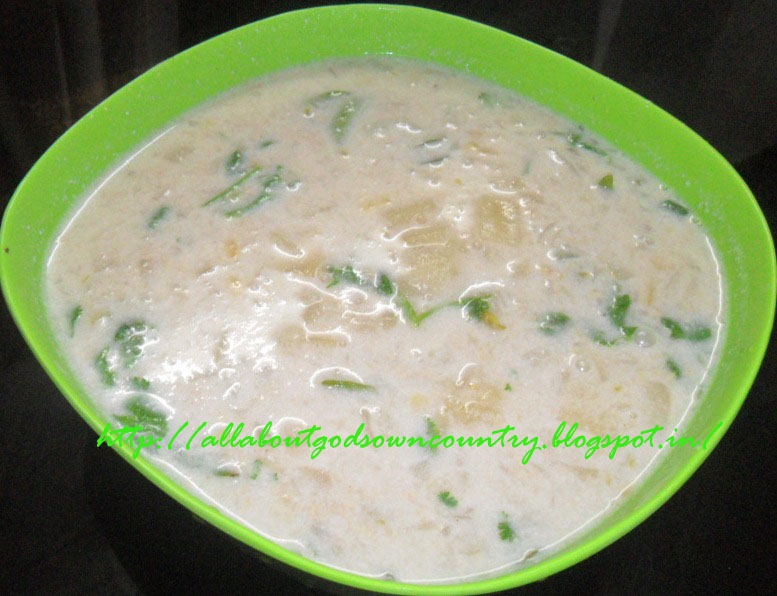
Potato Stoo – A trademark side dish for appam

Konj Thoran (Prawn Thoran) – a side dish for rice and breakfast items
Side dishes of appam – Normal chutney can be used with Appam. Egg curry, potato stoo, mutton curry, chicken curry, vegetable curry and chickpeas are common side dishes. Liver fry, Mutton chops, Chicken Dry Fry, Chicken stoo, Fish stoo etc are other curries. In short appam can be eaten with any side dish, and coconut milk added stoos are considered as perfect combos for appam.
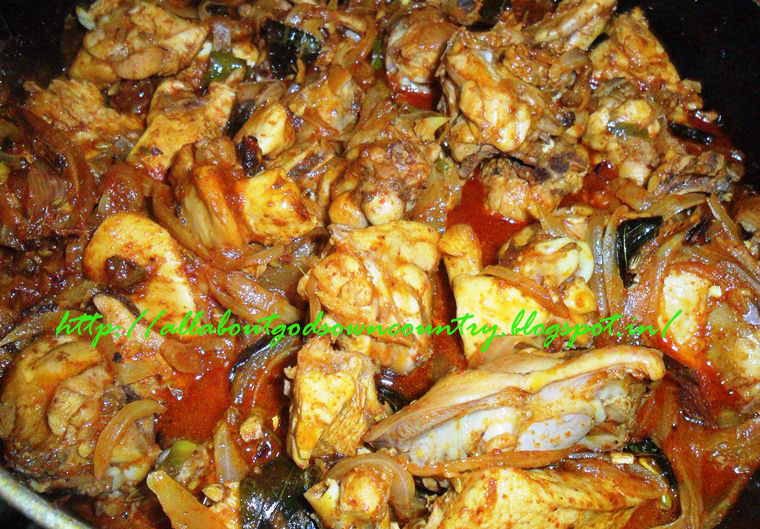
Chicken Curry – A Perfect non-vegetarian dish for all types of appams
Vattayappam – A derivative of appam
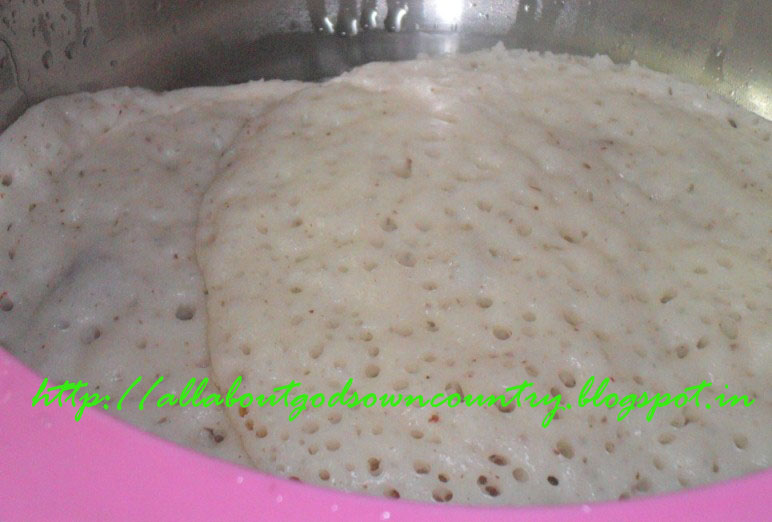
Vellayappam
Batter for appam is used to prepare Vattayappam. As name suggests, it’s round in shape like a cake and is steam cooked. Sugar is added in excess to make it tasty, and garnished using cashews, ghee and raisins. It can be taken as a simple snack or sweet, or can be served with any non-vegetarian dish like chicken curry or mutton curry.
Vellayappam is similar to normal appam, but made using a dosa pan instead of appam maker. For both Vattayappam and Vellayappam, same batter is used. Coconut is not finely grinded in both these cases, thus a slight difference from normal appam and palappam.
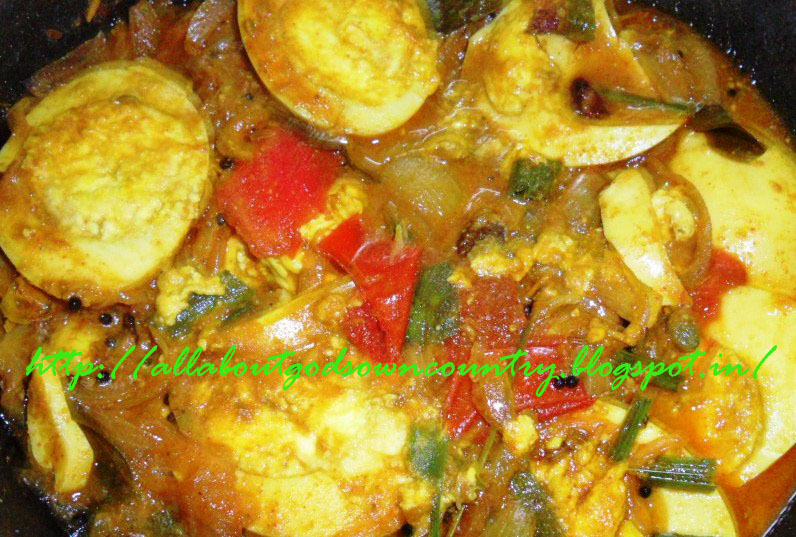
Egg Masala – A perfect combo for all types of appams
Puttu – Known by the name steam cake
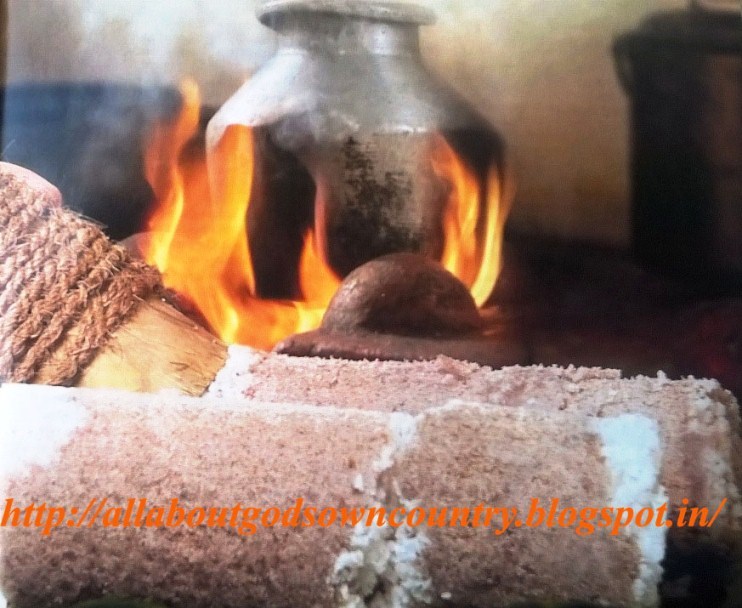
Chempa Putt – Made adding ragi powder to normal Putt Powder
It’s a typical Kerala dish made using rice powder and scrapped coconut. Variants of wheat powder, rava and ragi are also made. As it is steam cooked and oil content is zero, it holds high nutritious value. Puttu can also be made in hundreds of variants – adding vegetarian and non-vegetarian ingredients. Irachi Putt – adding minced meat and Chiratta Putt – made in coconut shells are some of the trade mark varieties of steam cake. Puttu tastes best if made in traditional bamboo steam maker. Read in detail some of the interesting facts and stories of Kerala’s putt.
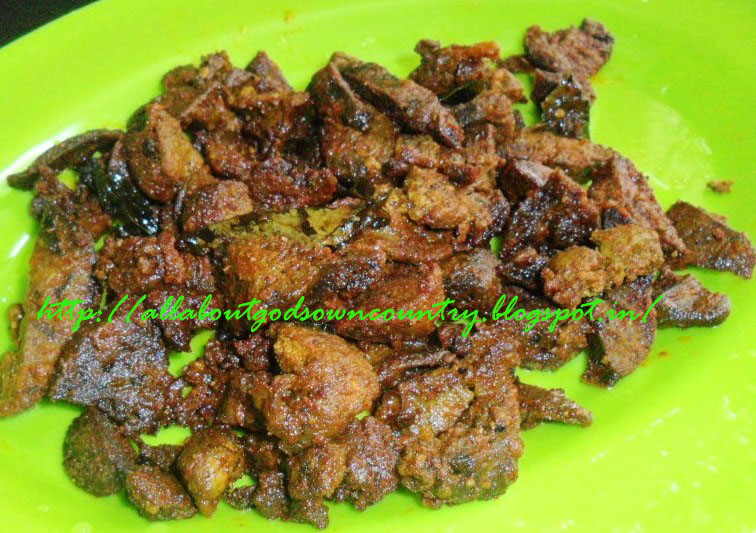
Chicken Liver Fry – A perfect combo for appam, idiyappam and steam cake
A simple rice puttu can be served with pappadam and cooked green gram, or with bananas. Chicken curry, liver fry, mutton chops, chicken thoran, egg curry, kadala curry (chickpeas curry) or vegetable stew – it gives different tastes with different side dishes. Puttu is the easiest dish that can be prepared within 10 minutes, making it housewives’ favourite. A piece of steam cake with two bananas and a cup of tea is an idol breakfast, of course.
Kerala special Noolappam/Idiyappam
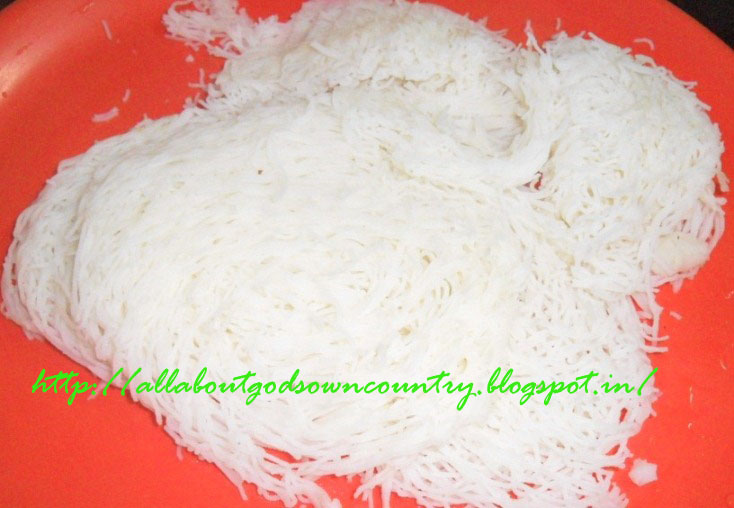
Noolappam
Similar to Kerala’s special breakfast dishes like Appam and Steam Cake, Noolappam and Idiyappam too claim their own Kerala trades. Similar to appam and steam cake, rice flour and scrapped coconut are the main ingredients needed to prepare both these dishes, which resembles Chinese noodles. Adding coconut milk to batter makes it more tasty.
Both are steam cooked, and healthy dishes for breakfast or supper. Similar to appam and steam cake, it perfectly matches with a wide range of side dishes – from non-veg to vegetarian. Vegetable stoo, potato curry, egg curry or mutton chops – Noolappam and Idiyappam perfectly match with these side dishes if you are a non-vegetarian.
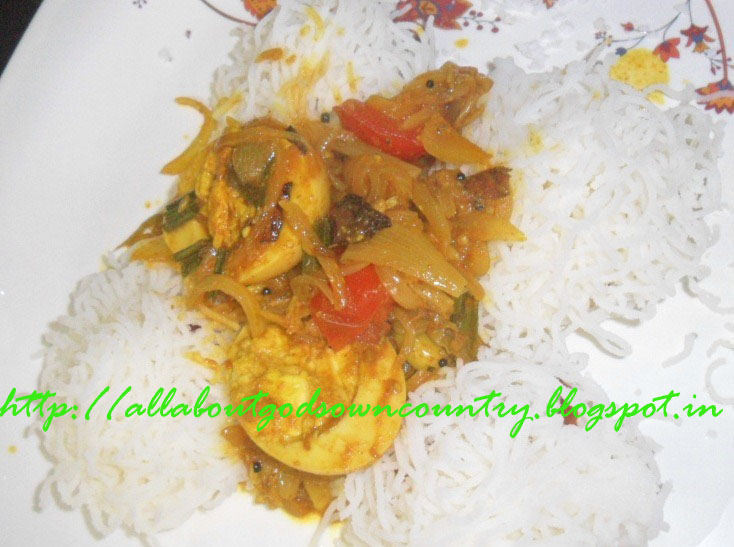
Idiyappam
An Idiyappam maker is needed. Batter is put inside Idiyappam maker, squeezed to the hollows of Idli maker and a little scrapped coconut is placed in between to prepare Idiyappam. It resembles Chinese noodles prepared in an idli maker. It resembles idli also. If they are spread flat on a steam cooker, it becomes noolappam. Both tastes almost same, and only differ in shape. Idiyyappam is idli shaped while noolappam is round like a dosa or chappathi, but looks like noodles spread to a plate. Holes of Noolappam maker are thinner than Idiyappam maker also.
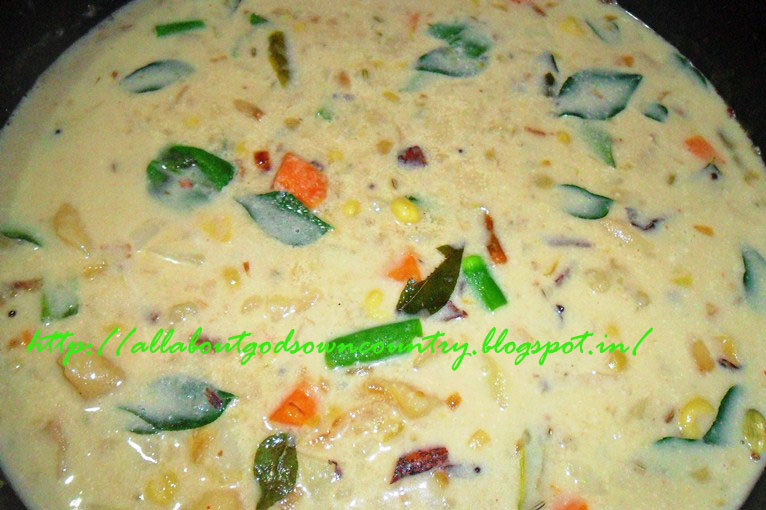
Mixed Vegetable Curry – Perfect combo for appam and idiyappam
Kozhukkatta
Upma, called as Uppmaavu in Malayalam
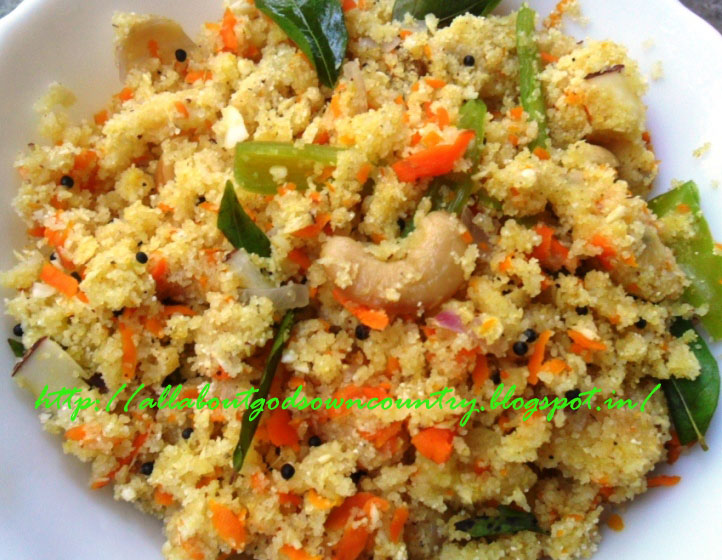
Upma
Though it’s not a typical Kerala dish, it’s quite common in Kerala. Made using roasted rava, it’s seasoned with scrapped coconut, onions and carrots, and a healthy dish that can be served with banana. Rice Seva, Vermicilli Upma and Wheat Upma are a few variants of normal upma. It’s also made in different variants.
Poori Masala with Coconut chutney
Poori is not a Kerala dish, and it belongs to the category of dishes accepted by Kerala people. As pooris are fried in hot oil, it’s definitely not a healthy dish. But it’s a favourite breakfast dish of Kerala, definitely. It’s normally served with potato masala and coconut chutney, and considered as a vegetarian breakfast. Batura is another variant of Poori, normally served during wedding receptions and parties, and quite common in Kerala restaurants. Poori is small, while batura is big in size, and both are fried in hot oil.
Kerala Perotta – Trademark Kerala dish

Kerala Perotta
This dish with multi-layers or folds is an integral part of Kerala cuisine. Originated in Malabar, now its popularity has reached world-wide. Made using all-purpose flour (Maida) Perotta is not suggested as a healthy dish, and is best combo with non-veg dishes like chicken, egg, beef and mutton of curry or dry fry type. Perotta can be served at any time, as breakfast or dinner and is a favourite dishes of all Keralities. Now Wheat Perotta is also available.
Oratti – Made from Rice flour
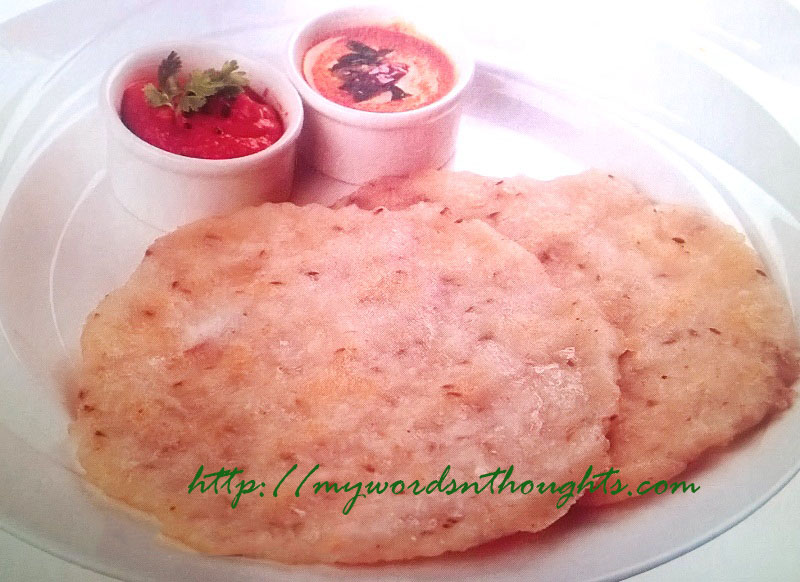
It has been a common breakfast and 4 o’ clock snack item earlier. It’s made using rice flour, cumin seeds and coconut. It resembles dosa and is slighter thick comparing dosa.It doesn’t need any side dish and tastes best when served hot.
Some homes serve rice as breakfast
Pazham Choru makes us remind of our nostalgic days
Conclusion
Yes, Kerala is rich in culture and quite popular for the wide range of traditional dishes served across the state. Yet this culture has never hesitated to accept the best parts of other cultures, and inviting North Indian and Tamil cuisines to our dining table is its best example. Kerala dishes are extremely popular in other parts of the world, for its trademark use of coconut and coconut oil, and the dishes described above can provide you a grand breakfast, of course.
Read about all items served in a traditional Kerala sadya of Thiruvananthapuram district.

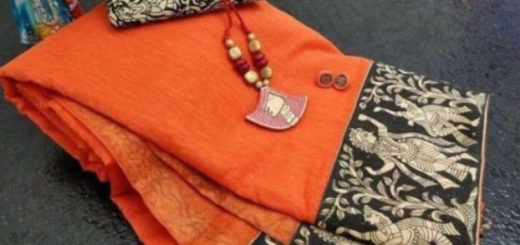
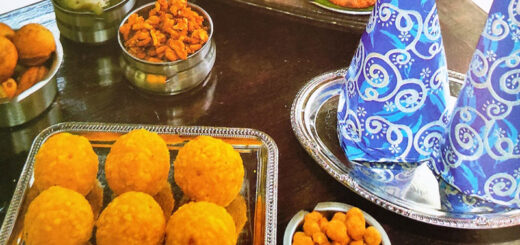
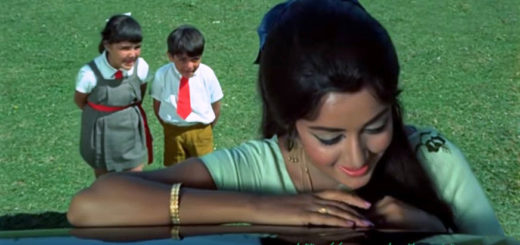




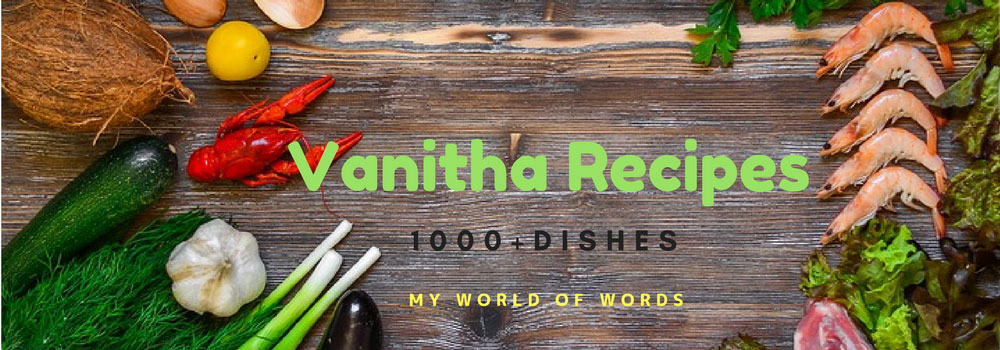
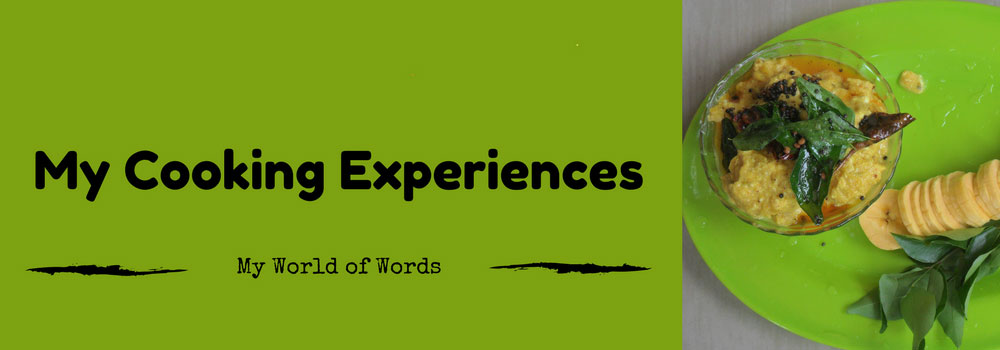


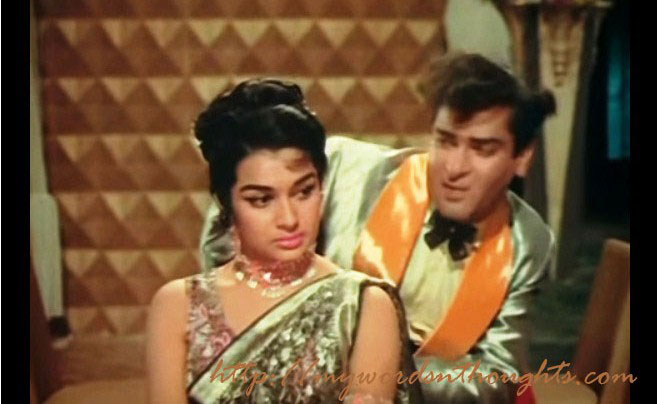

Recent Comments